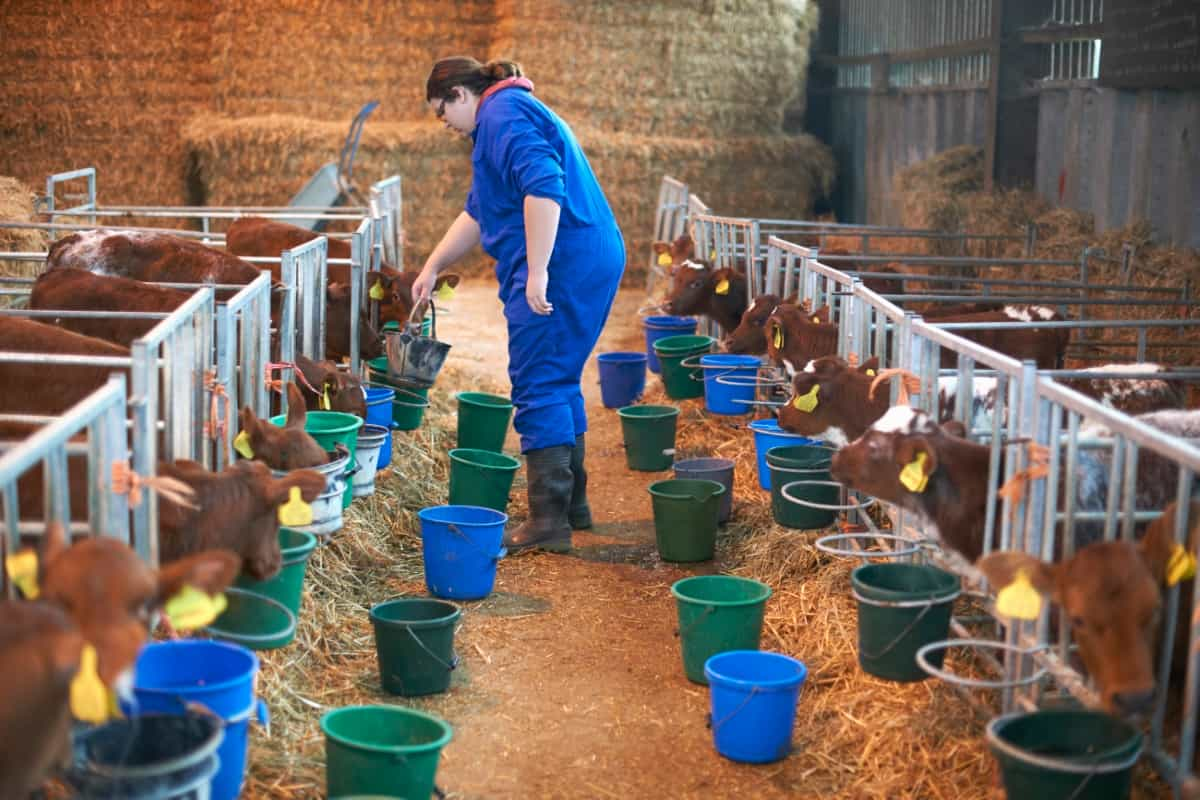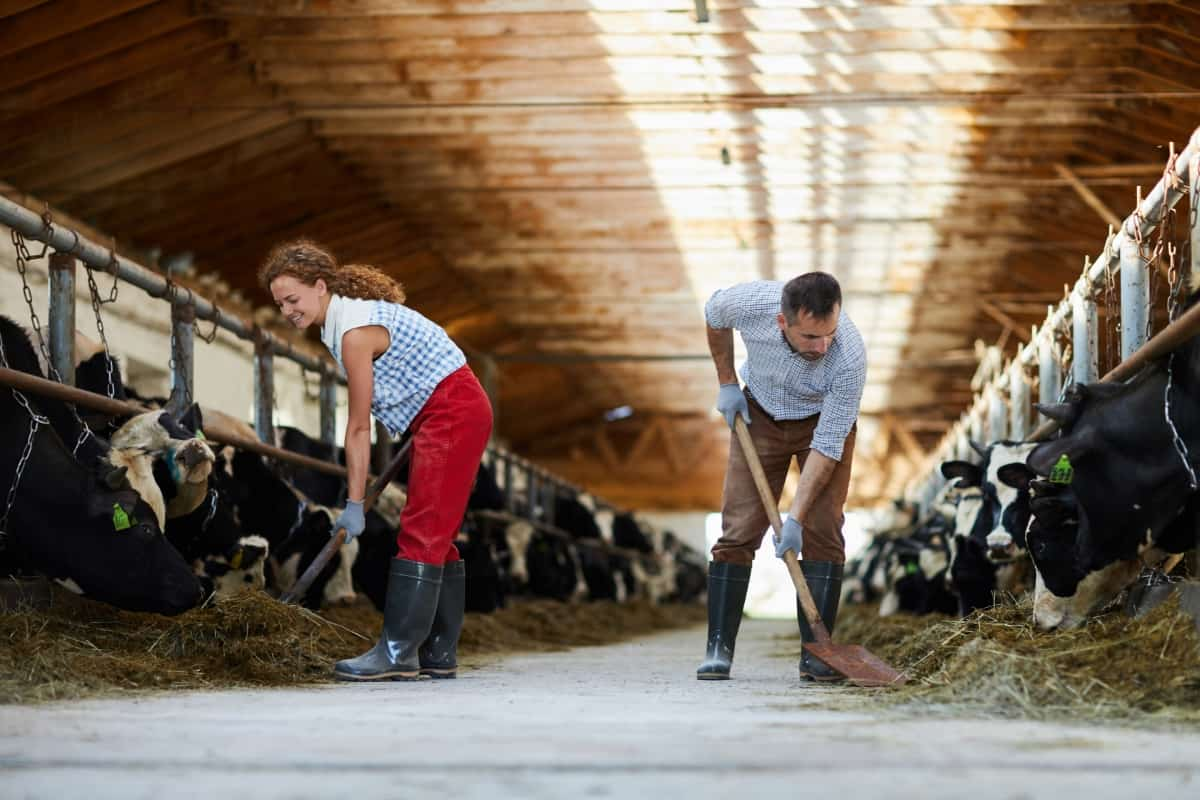Preparing cattle feed at home is a cost-effective and satisfying way to ensure the health and productivity of your livestock. The process involves understanding the nutritional requirements of cattle, selecting the right ingredients, grinding and mixing these ingredients, balancing protein and energy levels, adding necessary supplements and minerals, storing the feed correctly, and maintaining cleanliness throughout the process.

This guide offers a comprehensive look into how to make cow feed at home, focusing on the cattle feed manufacturing process, how to make cattle feed pellets, how to make cattle feed formula, cattle feed ingredients ratio, the best cattle feed formula, and cattle feed formulation.
How to Prepare Cattle Feed at Home
Understand Nutritional Requirements for Cattle Feed
Understanding the nutritional requirements for cattle feed is the first step in creating a balanced and effective feed at home. Cattle require a diet that is rich in energy, protein, vitamins, and minerals to maintain their health and productivity. It’s essential to know that different stages of life and different purposes (dairy, beef, calves, etc.) demand varying nutritional needs. For instance, dairy cows need more energy and protein than beef cattle.
When embarking on the journey of how to prepare cattle feed at home diy procedure, it’s crucial to research and understand these needs. Seeking advice from a veterinarian or cattle nutritionist can offer valuable guidance on tailoring homemade feed to meet the specific needs of your cattle, promoting their growth, milk production, and overall well-being.
Select the Right Ingredients for Homemade Cattle Feed
Selecting the right ingredients is a critical step in making effective and nutritious cattle feed at home. Common ingredients include grains like corn, barley, and oats, which are excellent sources of energy. For protein, ingredients such as soybean meal, cottonseed meal, and canola meal are popular choices.
It’s important to consider the cattle feed ingredients ratio, ensuring a balanced mix that meets the nutritional needs of your cattle. The best cattle feed formula is one that combines these ingredients in the correct proportions, providing a balanced diet. Local availability and cost of ingredients should also be considered, as this can significantly affect the feasibility of your homemade cattle feed project.
Grind and Mix Ingredients for Cattle Feed
Grinding and mixing the ingredients is the next step in the cattle feed manufacturing process. This step ensures that the feed is in a form that is easily consumable and digestible by the cattle. Grains need to be ground to an appropriate size – not too coarse and not too fine. Consistency is important for digestibility and to prevent issues like choking or digestive disturbances.
After grinding, the ingredients must be thoroughly mixed to ensure a uniform distribution of nutrients. Inconsistent mixing can lead to selective eating and nutritional imbalances. For those wondering how to make cattle feed pellets, this step is crucial, as the mixed feed is then processed through a pellet machine, creating pellets that are convenient for storage and feeding.
Balance Protein and Energy in Cattle Feed
Protein is essential for growth, reproduction, and milk production, while energy is needed for maintenance and daily activities. The key is to find the right balance that suits the specific needs of your cattle based on their age, purpose, and health status. This involves understanding how to make cattle feed formula that adequately meets these needs. It’s important to regularly assess the condition of your cattle and adjust the feed formula as necessary to maintain this balance.
In case you missed it: The Cattle Fattening Process: Methods, Feed Formula, and Cost

Add Supplements and Minerals to Homemade Cattle Feed
Adding supplements and minerals to homemade cattle feed is crucial for ensuring that the feed meets all the nutritional requirements of the cattle. Minerals such as calcium, phosphorus, and salt are essential for bone development, milk production, and overall health. Vitamin supplements may also be necessary, especially in regions where natural vitamin sources are insufficient.
The addition of these supplements should be based on the specific needs of the cattle, which can vary depending on factors like age, production stage, and health status. Regularly consulting with a veterinarian or a nutritionist can help determine the appropriate supplements and their quantities to include in your homemade cattle feed.
Store Homemade Cattle Feed Properly
Proper storage of homemade cattle feed is essential to maintain its quality and nutritional value. To maintain the quality and safety of the feed, it should be stored in a cool, dry area to prevent mold and spoilage. Excessive moisture and heat can foster the development of harmful bacteria and fungi, posing health risks to cattle.
Additionally, safeguard the feed from pests and rodents by utilizing clean, dry storage containers or bins. Consistently monitor the feed for any indications of spoilage and ensure it is consumed within a suitable timeframe to provide fresh and nutritious sustenance to the cattle.
Ensure Cleanliness and Hygiene in the Preparation Process
Maintaining cleanliness and hygiene throughout the preparation process of cattle feed is crucial for the safety and health of your livestock. All equipment used in the preparation, such as grinders, mixers, and storage containers, should be regularly cleaned and sanitized to prevent contamination.
In case you missed it: Cattle Breeding Calendar: Cattle Gestation Stages and Cattle Gestation Table

Personal hygiene is also important, as it prevents the introduction of pathogens into the feed. This includes washing hands thoroughly before handling ingredients and wearing clean clothes. By prioritizing cleanliness and hygiene, you can ensure that the homemade cattle feed is not only nutritious but also safe for your cattle, contributing to their overall health and well-being.
Test the Quality of Homemade Cattle Feed
Testing the quality of homemade cattle feed is an essential step to ensure that it meets the required nutritional standards. Regular testing helps in assessing the nutritional value and detecting any deficiencies or imbalances in the feed. This can be done by sending samples to a feed testing laboratory, where they analyze the composition, including protein, fiber, energy, and mineral content.
The results provide valuable feedback, allowing for adjustments in the feed formulation to better meet the specific needs of your cattle. Regular quality testing is crucial, especially when new ingredients are introduced or when there are changes in the cattle’s nutritional requirements due to growth, lactation, or other physiological changes.
Adjust the Feed According to the Cattle’s Age and Weight
Adjusting the feed according to the cattle’s age and weight is vital for optimizing their health and productivity. Younger cattle, growing cattle, and lactating cows have different nutritional requirements compared to mature, non-lactating cows. For instance, growing calves require a diet higher in protein to support their rapid growth, while lactating cows need more energy and minerals to sustain milk production.
Regularly monitoring the cattle’s weight and growth rate can guide adjustments in the feed formulation. This personalized approach ensures that each animal receives the right balance of nutrients corresponding to its specific stage of life and physical condition, leading to better health outcomes and improved productivity.
Consult with a Veterinarian for Homemade Cattle Feed
Consulting with a veterinarian or a cattle nutritionist is an important step in the process of making cattle feed at home. These professionals provide expert guidance on nutritional requirements, feed formulation, and health management. They can help in designing a feed formula that meets the specific needs of your cattle, taking into consideration factors like age, weight, health status, and production goals.
In case you missed it: Feeding Corn to Cattle: A Step-By-Step Guide

Regular consultations also help in identifying and addressing any health issues that may arise from nutritional deficiencies or imbalances in the feed. Their expertise ensures that your homemade cattle feed not only meets the basic nutritional requirements but also supports the overall well-being and productivity of your cattle.
Conclusion
Preparing cattle feed at home is a practical and rewarding endeavor that can lead to significant health and economic benefits for your livestock. By understanding the nutritional requirements, selecting the right ingredients, and ensuring a balanced mix, you can create a high-quality feed that meets the specific needs of your cattle.
- Feed Your Flock for Less: Top 10 Tips to Save on Chicken Feed
- Ultimate Guide to Ossabaw Island Hog: Breeding, Raising, Diet, and Care
- Hatching Answers: The Top 10 Reasons Your Chickens Aren’t Laying Eggs
- Eggs and Economics: Breaking Down the Cost of Raising Backyard Chickens
- Defend Your Greens: Proven Methods to Keep Iguanas Out of Your Garden
- Ultimate Guide to Cinnamon Queen Chicken: A Comprehensive Guide for Beginners
- Ultimate Guide to California Tan Chicken: Breeding, Raising, Diet, Egg-Production and Care
- Ultimate Guide to Marsh Daisy Chicken: Breeding, Raising, Diet, and Care
- 10 Types of Chicken Farming Businesses You Can Start for Profits